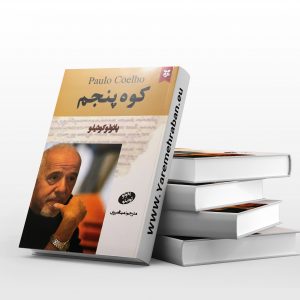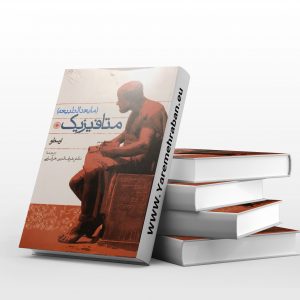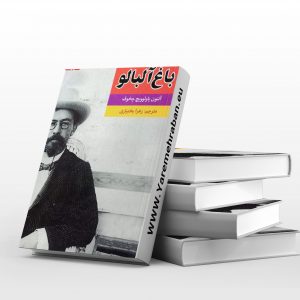Description
Introducing the book The Prisoner of Las Lomas by Carlos Fuentes
“Prisoner of Laslomas” is a short story by Carlos Fuentes, which tells the story of Mexican society and a group of people who have become rich through social unrest. This author describes the post-World War II era in which some people became very wealthy through their contacts with Americans in Mexico.
An abusive group that emerged in the 1950s and 1960s and entered the realm of economics and politics. Carlos Fuentes, based on his own experience of politics, has included these people in two of his works, The Death of Artemio Cruz and The Prisoner of Lasulomas.
He wrote this short story in the late 1980s to portray the wealthy novices who have been blessed with disorder. A stratum influenced by American goods and movies.
The Prisoner of Las Lomas Book
The birth of West Mexico in the twentieth century became the subject of Carlos Fuentes, who, through his connection to politics and literature, was able to publish many famous and prominent works. The short story “Prisoner of Laslomas” is one of the author’s works that depicts the individual and social angles of modern yet westernized Mexican people.
About The Prisoner of Las Lomas
The story of “Prisoner of Laslomas” is a short work that reflects the events of the Mexican Revolution and has a bitter and humorous look at the state of society. Thus, this work is a very small source of twentieth-century Latin American history that has become very readable and enjoyable with the atmosphere of an experienced author.
In this work, events occur one after the other and persuade the reader to move the end of the book forward. “Nicolas Sarminto” is the main character of this story, whose profession is law, which achieves a lot of wealth in time. He changes his living conditions and connects with many women.
About Carlos Fuentes, imprisoned writer from Las Lomas
Carlos Fuentes Carlos Fuentes, a prominent Spanish writer and screenwriter, was born on November 11, 1928 in Panama City. He traveled to various countries as a child because of his father’s job as a Mexican diplomat. He spent his adolescence in the United States and Chile learning English.
Many political currents took place in Chile during those years, and the author became interested in their influence on socialist tendencies. Carlos Fuentes began his career in politics and social movements at that time, and later studied law.
Following in the footsteps of his father, he served as ambassador to Mexico, traveling to London, France, and several other countries. He also wrote and taught at various universities, including Pennsylvania, Cambridge, Harvard, Princeton, and Columbia. He wrote world works for many years and pursued his political activities throughout his stories. The last years of Carlos Fuentes’s life were spent with the loss of his two children, and he died on May 15, 2012 due to bleeding.
Carlos Fuentes is one of the most famous writers of Latin American literature, who made political and social issues the main theme of his stories. His name shines alongside prominent writers such as Gabriel Garcia Marquez and Mario Vargas Llosa, who began writing in earnest in the mid-twentieth century.
He wrote novels and short stories and received the Mexican National Literary Award for his book Orchids Under the Moonlight. During various years, he also received the Alfonso Rees International Prize, the prestigious Miguel Cervantes Literary Prize, and the Order of the Legion Donor of France.
The author’s books are world-renowned and have been translated into various languages. Among his works that have been translated into Persian are “Death of Artemio Cruz” translated by “Mahdi Sahabi” and “Orange Tree” and “Burnt Water” translated by “Ali Akbar Fallahi”.

In an excerpt from Laszloomas Prisoner, we read:
My house in Las Lomas has a distinct feature: it’s a manifestation of the benefits of immortality. I do not know what people said about this house when it was built in the early 1940s. World War II poured a lot of money into Mexico. We exported raw materials at high prices, and agricultural workers knelt in the church to pray for the war to continue. We sent cotton, hemp, vegetables and strategic materials to the six corners of the world.
I do not know how many cows were killed in Sonora so that this house could be built in Las Lomas, or how many pieces the black market stump was lying behind the stone and the bed of this house. You must have seen houses like this on Paseo del Lar Forma and Boulevard de los Viris in the Polanco neighborhood.
These houses represent the stupid architecture inspired by the colonial style, and are just like the interior of the Alamda Cinema, which itself is an imitation of the Taxco Plattersk style with its domed ceilings and towers and entrance corridors. Another was the false ceiling of the cinema, which was a galaxy of hundred-watt lamps and a pile of elusive clouds. What can I say, my house on Boulevard de los Viris lacked just this one.
I have no doubt that the stunning architecture of this house, where I have lived for more than twenty years, has been a source of ridicule. Imagine two or three of Abel Cassada’s caricatures of these church entrances, balconies with wrought-iron railings, delusional decorations of all sorts of inscriptions and arches, and angels and madonas, and all kinds of gypsum fruits and stained-glass and stained-glass columns. Inside the building is no better than this. believe it.
The inside is the external reflection. Here again, in the foyer that stretches upstairs, we see stairs made of blue tiles, and iron railings and balconies overlooking the same foyer, in addition to an iron chandelier with artificial candles and artificial teardrops, which is actually plastic, and Tiles, with very uncomfortable furniture made of wood and leather, shabby and dry, as if made to sit on and listen to the opinion of the Inquisition. It really is a masterpiece …!
But, as I said before, the extraordinary thing is that this white elephant, which symbolizes the vulgar ostentation and the enlightened money of the capitalists who benefited from the war, has become a reminder of the golden age over time. Today, when everything is rapidly declining, we long for the days when things were improving.
The Prisoner of Las Lomas
Carlos Fuentes is a writer who in his works of fiction has been very critical of the new and emerging class that appeared after the Mexican Revolution and from the fifties onwards. Those who became bread and butter with the revolution and became economic giants, and because of their good relations with the United States, sent a flood of American goods and cultural materials to Mexico. One of the clearest examples of Fuentes’s critical work on this subject is The Death of Artemio Cruz, which deals with the story and nightmares of a former revolutionary hero and today’s economic corruptor.
The novel “The Prisoner of Las Lomas” is another example of the same kind of critical stories of Fuentes and other explorations of the Mexican people, especially the wealthy and novice, who, thanks to political and economic turmoil, gained free treasure and did things that had far-reaching consequences. It embraced both themselves and society. The story goes that Nicholas Sarminto, the Mirzabnevis of the not-so-prestigious drug lords, who, by obtaining the secrets of the life of one of the same Artemis Cruzes, inherited a huge fortune overnight, could achieve whatever he wanted with this windfall fortune.
He gathers many beautiful women around him, has many hidden economic ties with the United States, and his only difference with Artemio Cruz is that he is a generation ahead and maintains his dominance until the 1980s. He is associated with a thousand Gringos manufacturing and trading companies, and in his own words, “he has subscribed to all Gringos magazines so that nothing of his innovations in the field of industry, fashion, etc. will be hidden from his eyes.”
The world of Nicolas Sarminto is constantly welcoming people like himself, and in fact it is a prisoner who has turned him away from the reality of the outside world and real human beings. The real dilemma of this prison comes to him when he is imprisoned in the house of his enemy to only chew on his memories: . You have the right to accuse me of being selfish, superficial, arrogant, working for others and not knowing how to tie my shoelaces.
But what does not stick to me is the curiosity of others. I think this is my lifeline. I guess that’s why women love me. “I do not ask them to explain, I do not delve into their past.”
1- Introducing the book The Prisoner of Las Lomas on YouTube
2- Introducing the book The Prisoner of Las Lomas in Aparat














Reviews
There are no reviews yet.